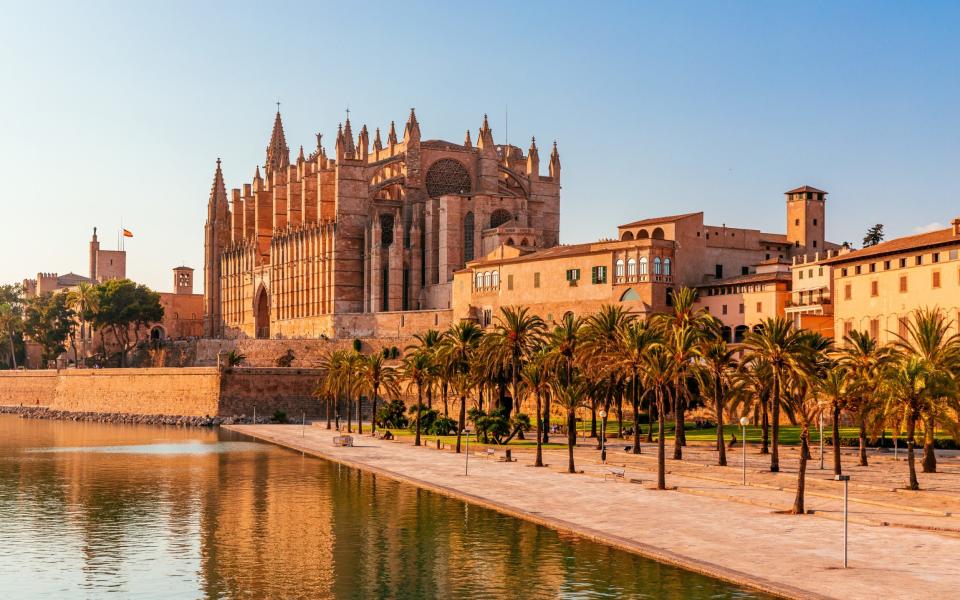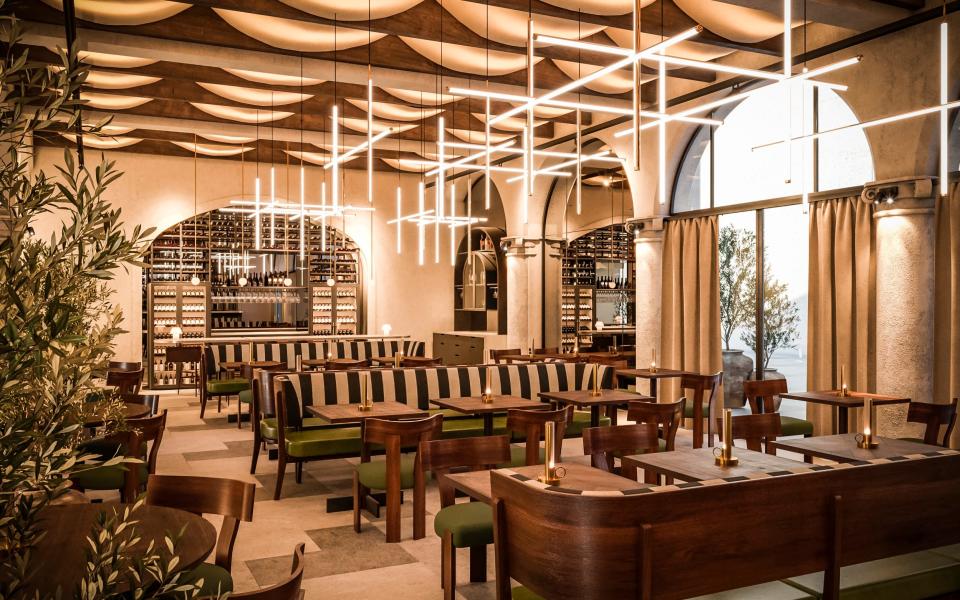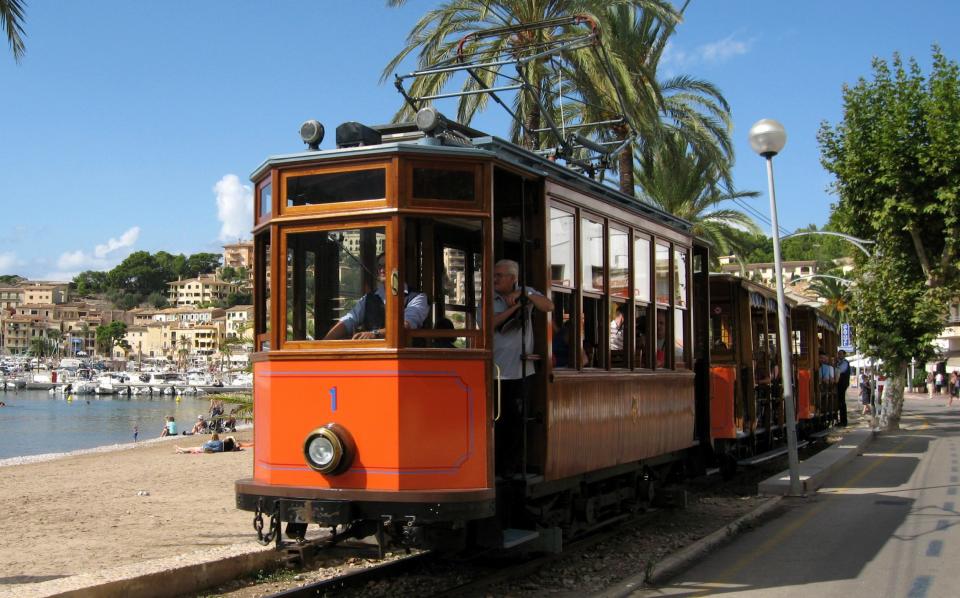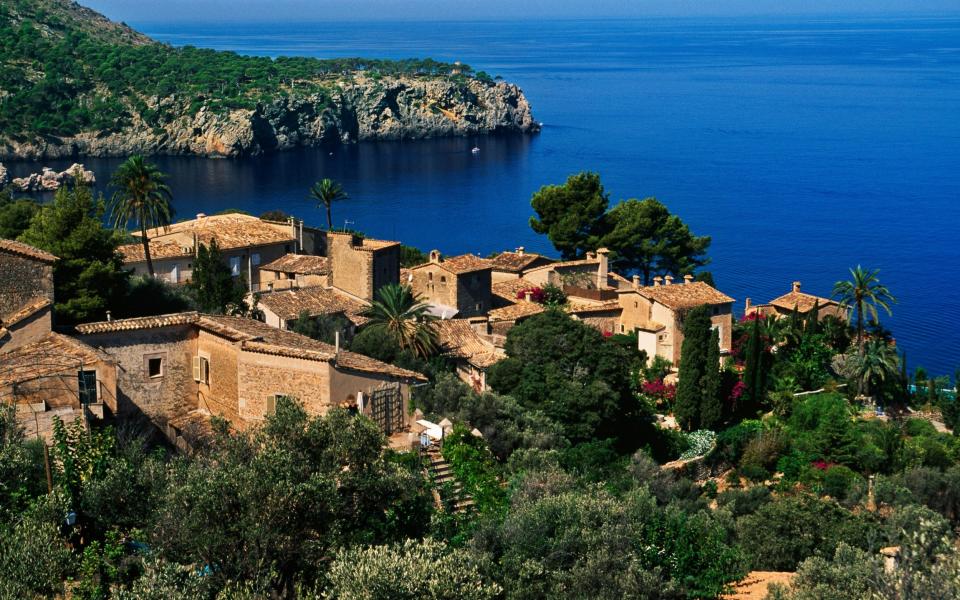Winter is a relative concept in Palma de Mallorca. On a December afternoon, the sun casts a golden glow on the facade of the magnificent cathedral of this historic city. Above, the sky is as clear and blue as if it were midsummer. If you had been walking around these 16th century walls and bastions a few months ago, you would have been among hundreds of tourists. But today it is only the locals who wear coats, scarves and expressions of perplexity when they see me in shorts. Winter and the perception of it? Relative indeed.
An island firmly associated with sun, sea and sand, Mallorca has been a summer staple since its tourism boom in the 1960s. While its busy beach resorts remain the island’s biggest draw, There is now a growing appreciation of Mallorca’s off-season appeal, and much of that attention falls on Palma. I have visited the city frequently over the past 20 years and have seen it evolve from a sleepy provincial to a credible city favorite for a getaway packed with history, shopping, culture, art and boutique hotels in heritage buildings.


Although Palma attracts all year round, winter visits are particularly special. They are also in greater demand. According to Fomento del Turismo, the island’s tourism office, there are 13 percent more flights operating during winter this year than last, while 85 percent of Palma’s hotels – more than ever before – remain open throughout the season.
Among those welcoming winter guests is Hotel Calatrava: a well-established townhouse atop the city walls. Its beautiful rooftop terrace seemed like a perfect place to end my walk. There I met María Martínez, commercial director of the hotel, who accompanied me to have a coffee with a panoramic view that encompasses the bay of Palma, the cathedral and the foothills of the Tramuntana mountain range.
“All four hotels in our city will remain open this season,” he tells me, “and at a faster pace than in the summer. In addition to being cheaper, our winters are mild and generally sunny, making the weather perfect for sightseeing. There are festivals and markets in the towns, cities and here in Palma; and without the summer crowds, the island feels more authentic. For me, it is the best time to visit.”
There is an equally positive air throughout the city at the Nobis Hotel Palma, which opened in November in a former Moorish palace. As one of the oldest buildings in Palma, it is full of wide arches and has withstood earthquakes, fires and more than 1,000 years of renovations.
Perhaps its best asset is the bar, which would not be out of place in any European capital. Despite having a 9m-high ceiling, it is surprisingly cozy and is already popular for after-work cocktails, when nighttime temperatures discourage outdoor gatherings.


Equally ideal for colder days is Hammam al Andalus, an authentic Moroccan-style spa and bathhouse just outside the old town (palma.hammalandalus.com). With steam pools and a sauna in a marble-clad and mostly candlelit space, it’s perfect for occasions when the sun isn’t shining. I easily lost an hour there before being massaged on a marble slab, after which I returned to the old town to visit the original (and surprisingly intact) Arab baths, which date back to the 10th-century Islamic occupation.
Elsewhere, I visited chapels and churches decorated to varying degrees of opulence before stumbling upon more contemporary charm at boutiques like Arquinesia, whose fragrances (all locally inspired and produced) are reverently displayed museum-style. The store is hidden behind the central avenue Passeig des Born, whose majestic plane trees now shine under thousands of festive lights.
But beyond being suitable for shopping and sightseeing, winter in Mallorca is a time to get outdoors. In particular, the absence of the scorching heat of summer makes the Tramuntana mountains take center stage. From Palma, I left the city on the historic wood-clad train and passed through almond and olive orchards towards the peaks. The hour-long journey ascended through tunnels and mountain passes to cross the massif, after which we descended towards the elegant town of Sóller.


From Sóller station, it’s a two-minute walk to Meem Townhouse: one of just 10 per cent of hotels outside Palma operating this winter. “There are only two properties open in Sóller,” explains owner Jessica Bosch as she showed me my room: a beautiful, white, designer space that is almost reminiscent of the Cyclades in its simplicity. “Tourism here has always been seasonal and attitudes change slowly, but gradually more businesses are expanding their operations to accommodate winter cyclists and hikers.”
One thing in Jessica’s favor is that Meem Townhouse is a slick operation that requires no more than a skeleton staff to keep things running smoothly. After a breakfast including orange juice and Sóller-grown avocados, I chat with Eduard Casajuana, a local hiking guide, as we walk from Sóller to Deià along the GR221: a long-distance trail known more romantically as the Camino de la Piedra Dry.
Polished after centuries of use, the route’s cobblestones speak of its age. “This iron truck [mule trail] It dates back to the Arab era,” Eduard informs me as we walk through scrubland and pine forests bursting with new season growth. “These routes were the main means of communication in Mallorca until roads appeared in the mid-19th century.”


The road that crosses this stretch of mountain allows you to hike from one point to another thanks to reliable buses that connect the different towns. Without needing to walk back, we took our time along the trail, stopping to admire the sea views and watch farmers shake the branches of their olive trees to gather this year’s harvest.
Before reaching Deià we detour to visit the hamlet of Llucalcari and then continue along a coastal path that, according to Eduard, is the most beautiful in Mallorca. The route leads to Cala Deià, where my favorite beach bar (now closed for the season) is perched on a cliff above the cove. Unfortunately, winter visits are not suitable for having a snack by the sea or taking a refreshing swim. But it’s okay, I think to myself. For that I will return in the summer.
Essentials
How to get there
British Airways (ba.com), easyJet (easyjet.com), Jet2 (jet2.com) and Ryanair (ryanair.com) fly direct to Palma from London, Liverpool, Bristol and Manchester from £30 return. The center of Palma is 15 minutes by car from the airport.
Where to stay
Calatrava Hotel (00 34 971 72 81 10; calatravahotel.com) has rooms from £241 per night B&B; Nobis Hotel Palma (00 34 871 55 58 00; nobishotel.es) from £258; and Meem Townhouse (00 34 616 07 29 63; meemtownhouse.com) from £137.
To do
Private half-day walks for two with Eduardo Casajuana cost from £241 (falcodelareina.com).